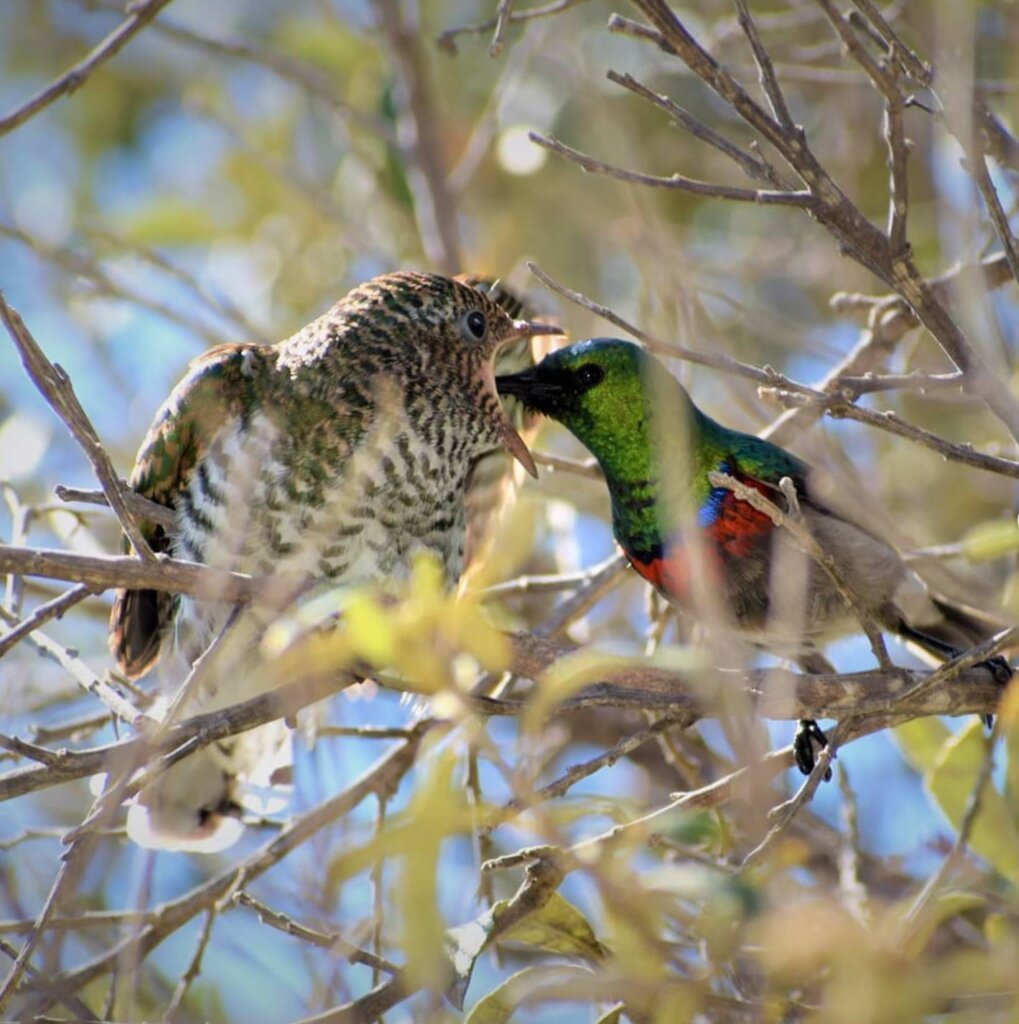A small green bird with a dark spur extending from its head down its throat.
Meet Kass’s Cuckhoo
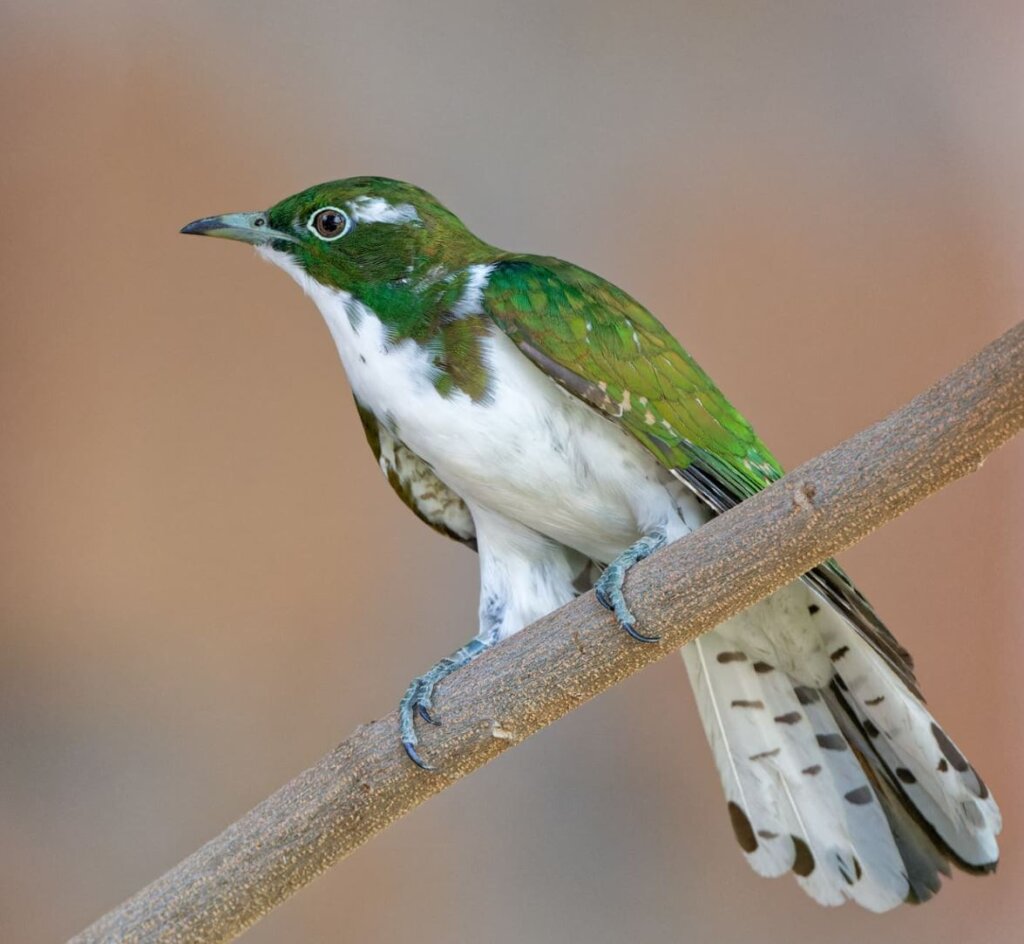
Image courtesy of Instagram/am_wildlifepics
The Klaas cuckoo ( Chrysococcyx klaas ) is a species that is 18 cm tall and weighs about 26 g. The head is green while the beak is green. Chrysococcyx klaas has a white throat, green legs, and a green back. This species exhibits sexual dimorphism. Males have a glossy green body with few markings and plain white underparts. Brown eyes
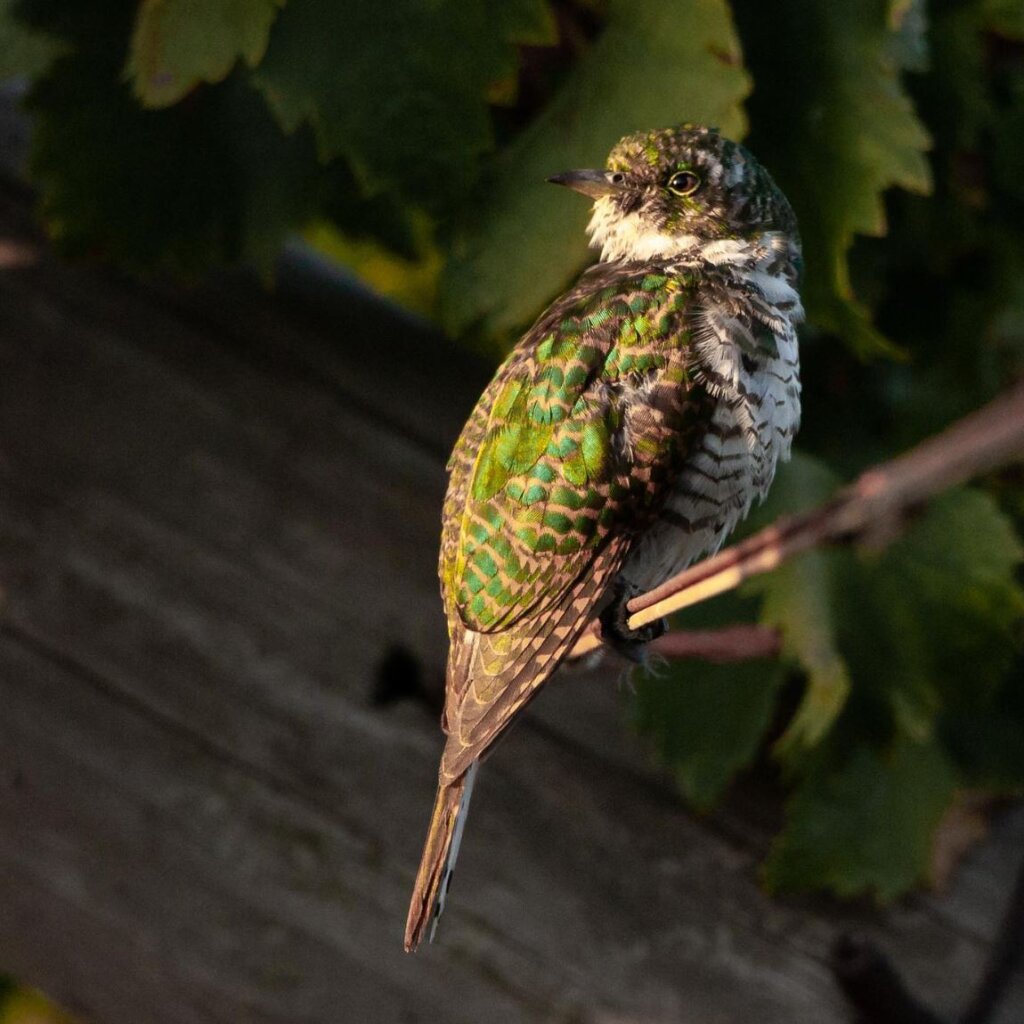
Image provided by Instagram/comfort
Females have a bronze-brown body, green wing coverts, and lightly barred white underparts.
When observed in flight, males are mostly white with dark primaries and females have a mostly brown appearance. Both males and females have a small white patch behind their eyes.
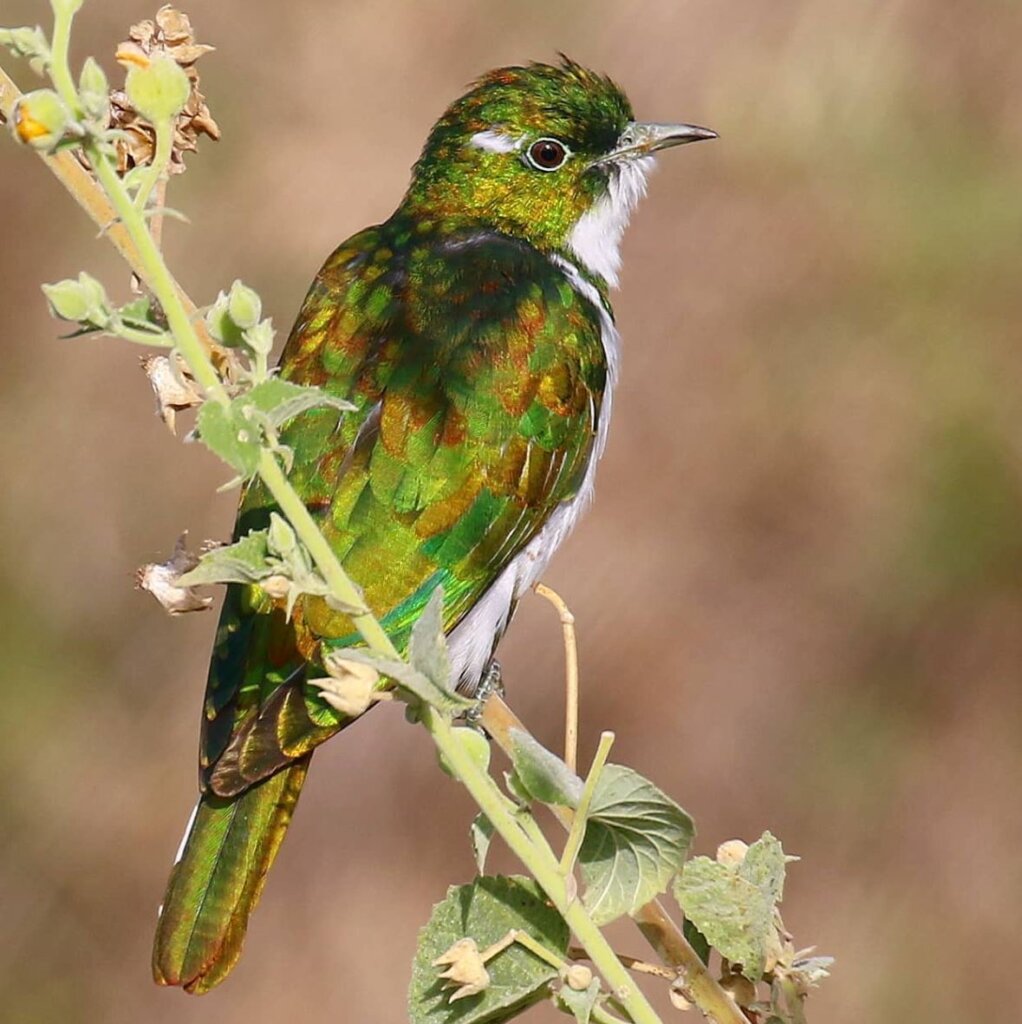
Image courtesy of Instagram/birdsofethiopia_fikretatas
This bird is quite common in sub-Saharan Africa, absent only in arid deserts.
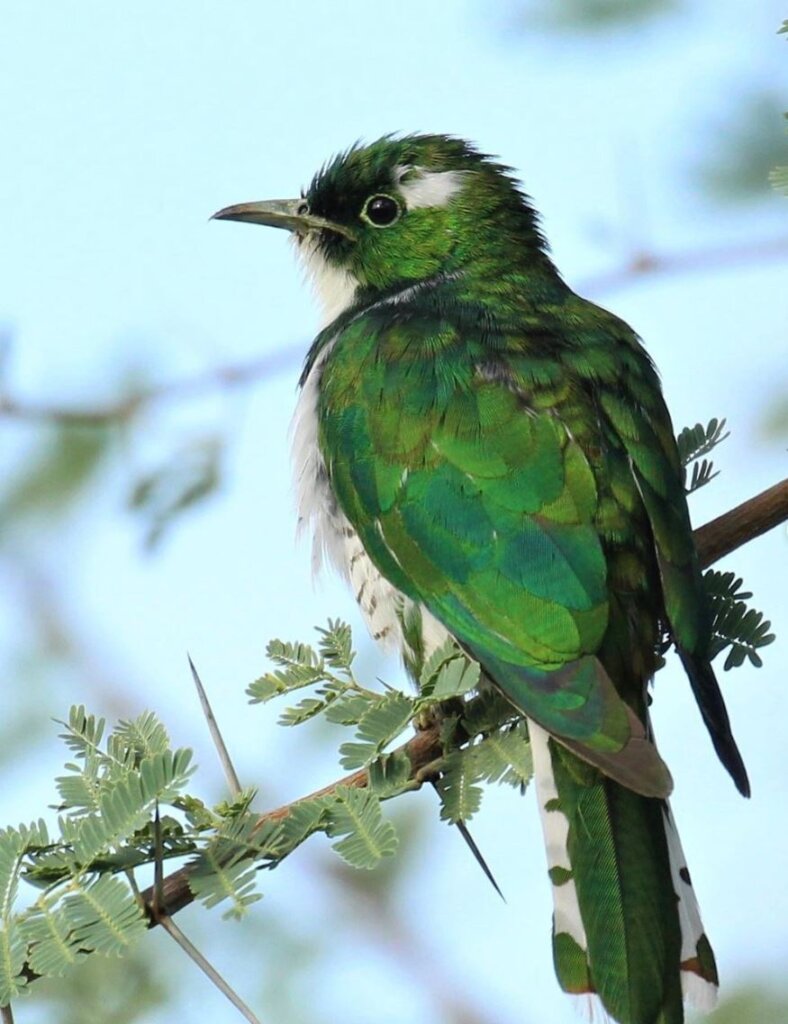
Image provided by Instagram/omurcemakkaya
Klass cuckoos often like to live in broad-leaved forests, especially miombo (Brachystegia) and Mopane (Colosphermum mopane) forests. But it also occupies dense acacia thickets, forest edges, gardens and exotic trees growing around farms.
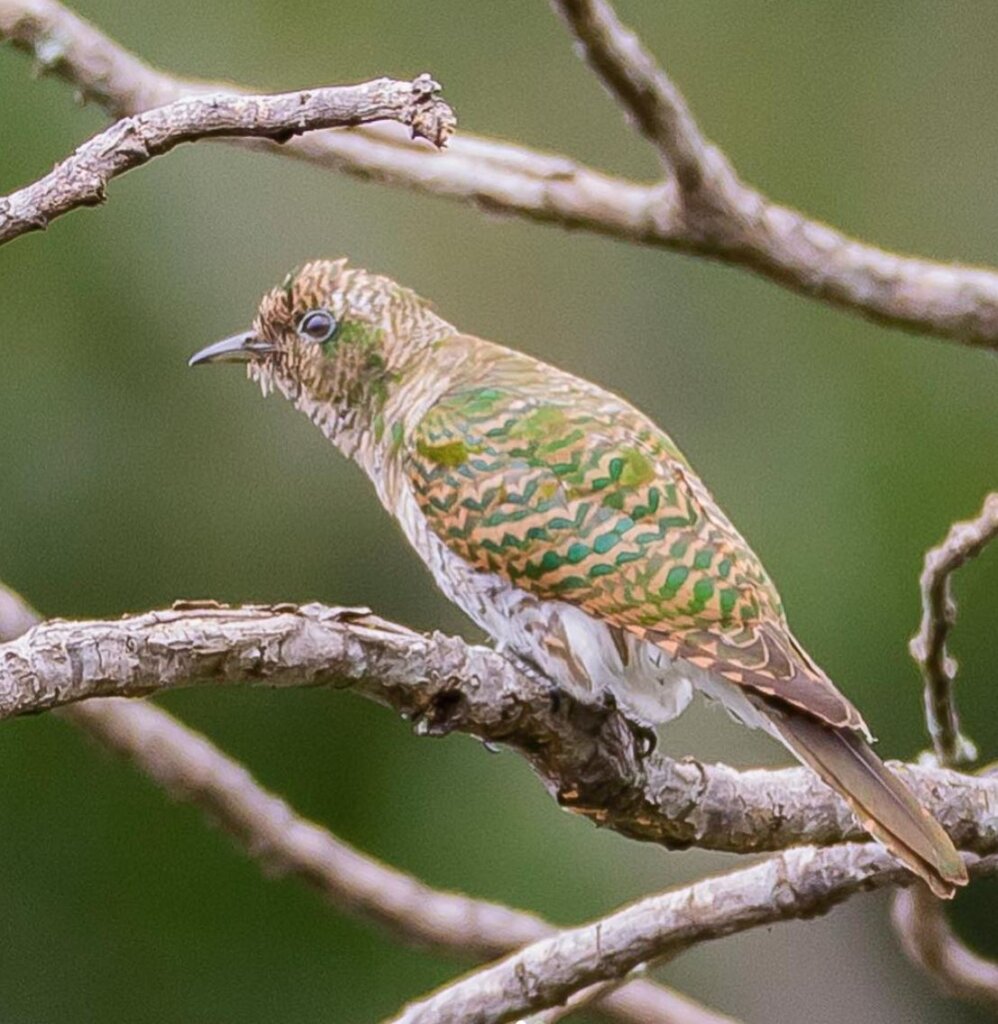
Image courtesy of Instagram/rog_tom_hogg
A primarily insectivorous bird, Klass’s Cuckoo specializes in eating butterflies and caterpillars by foraging in the foliage of trees or bushes. It will also eat other insects, taking them from leaves and occasionally feeding on flying insects on the wings. It also rarely eats seeds and fruit buds.
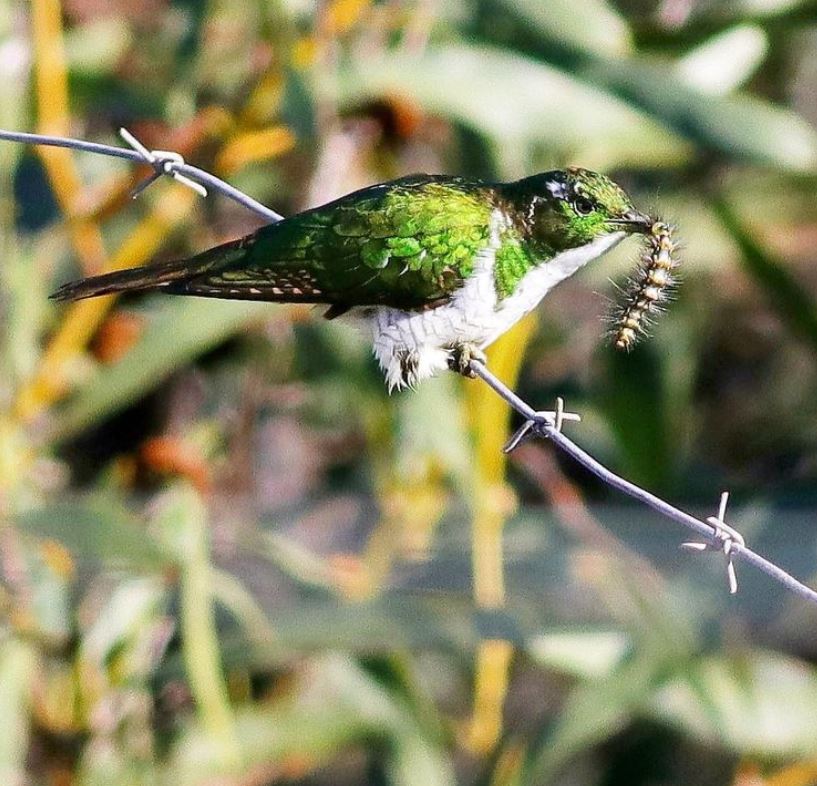
Image courtesy of Instagram/stevepeck49
As parasitic birds, these birds lay eggs in the nests of other birds. The host bird thinks the egg is hers, so she incubates it and takes care of the chicks. Egg-laying season occurs year-round, peaking from October to January when the female lays one egg per nest, which works out to about 24 eggs per season. Immediately after hatching, the chicks usually chase out any host chicks present. It stays in the nest for about 19-21 days.
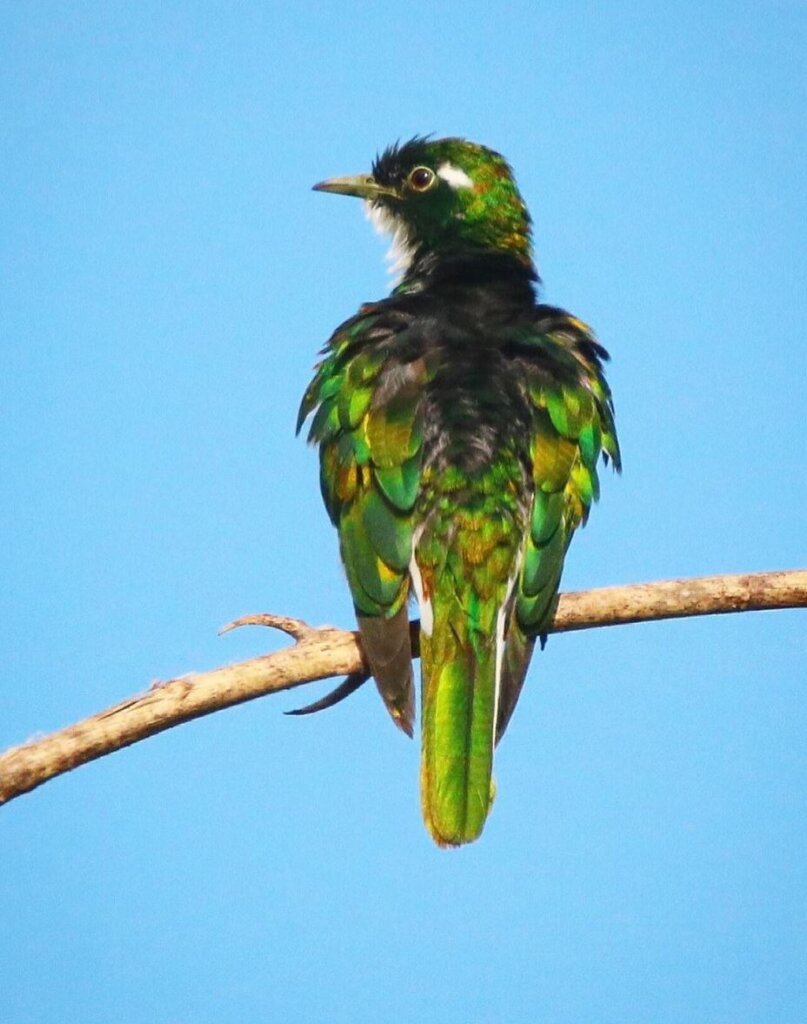
Image courtesy of Instagram/leighhoets
This bird is not threatened in any way, in fact its range appears to have expanded recently.
